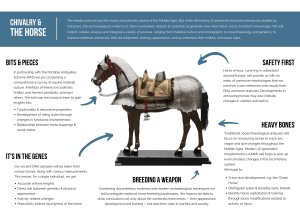The horse is arguably the most characteristic animal of the Middle Ages. But while the development and military uses of warhorses have been intensively studied by historians, the archaeological evidence is often overlooked or under-valued. This research project, launched in February 2020, has conducted the first ever systematic study of the full range of archaeological evidence for warhorses, and horses more generally, from medieval Britain. As a collaborative venture between the University of Exeter’s Department of Archaeology and the Department of History at the University of East Anglia , this project connects the study of medieval horses to their broader social and landscape contexts from the late Anglo-Saxon to the early Tudor period (c. AD 800–1550). The overarching aim is to produce new understandings about an animal that was an unmistakable symbol of social status, closely bound to aristocratic, knightly and chivalric culture, and a potent weapon on the battlefield.
Research Questions
Some of the key questions that the project has focused on include: Did the Norman Conquest see the widespread introduction of new breeds of horse, or was the development of the warhorse a more incremental process rooted in the late Anglo-Saxon period? How was the development of knighthood in the twelfth and thirteenth centuries reflected in horse apparel? Does the archaeological record provide evidence for the celebrated ‘great horse’ of the fourteenth century? How do these trends relate to the changing nature and decoration of horse apparel and to the geography of horse studs? Do we see physical evidence of attested decline in warhorses, followed by Tudor-period initiatives to increase their size?
The different lines of evidence are challenging historical wisdom and generating a fresh timeline of changing horse stature and appearance between the end of the Roman period and the dawn of the Renaissance. See the ‘Our Publications’ section at the end of the ‘Our Research‘ tab for papers we have published so far.
